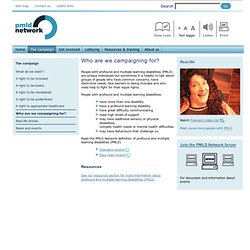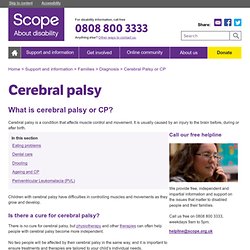

Training materials for teachers of learners with severe, profound and complex learning difficulties. The SLD Experience, a journal from BILD, the British Institute of Learning Disabilities. Are you: Responsible for working with children and young people with severe learning difficulties in a mainstream class, unit or special school?

Seeking new ideas, drawn from the latest research and best practice in schools, to implement in your classroom or school? Keen to know how government policies will affect you and your pupils now, and in the future? Wanting to keep up to date with the latest curriculum developments and understand the implications of new legislation for you and your school? Keen to share good practice and new ideas with other schools? If so, The SLD Experience is for you. It is aimed at parents and practitioners working with and caring for children and young people with severe learning difficulties in mainstream and special schools.
The SLD Experience is the only UK journal dedicated solely to promoting good practice with school pupils with severe learning difficulties and is published three times a year, in the spring, summer and autumn terms. Content. PMLD (profound and multiple learning disabilities) This section is aimed at professionals who work with or support people with profound and multiple learning disabilities (PMLD).

It outlines key issues and provides good practice information for anyone working with or supporting people with PMLD. Involve Me project Involve Me is about involving people with PMLD in decision making creatively. A free DVD resource is currently available, as well as Involve Me training. Who are we campaigning for? - from the PMLD. People with profound and multiple learning disabilities (PMLD) are unique individuals but sometimes it is helpful to talk about groups of people who have common concerns, have distinctive needs, face barriers to being included and who need help to fight for their equal rights.

People with profound and multiple learning disabilities: have more than one disability have a profound learning disability have great difficulty communicating need high levels of support may have additional sensory or physical disabilities,complex health needs or mental health difficulties may have behaviours that challenge us. Read the PMLD Network definition of profound and multiple learning disabilities (PMLD) Introduction to cerebral palsy - What is cerebral palsy? - Causes of cerebral palsy - Types of cerebral palsy - Disability Charity - Scope UK. Children with cerebral palsy have difficulties in controlling muscles and movements as they grow and develop.

Is there a cure for cerebral palsy? There is no cure for cerebral palsy, but physiotherapy and other therapies can often help people with cerebral palsy become more independent. No two people will be affected by their cerebral palsy in the same way, and it is important to ensure treatments and therapies are tailored to your child’s individual needs. How common is cerebral palsy? In the UK, cerebral palsy affects about one in every 400 children. What causes cerebral palsy? There may be no obvious single reason why a child has cerebral palsy. Infection in the early part of pregnancy Lack of oxygen to the brain Abnormal brain development A genetic link (though this is quite rare) What can increase the chances of cerebral palsy? The following factors can increase the likelihood of cerebral palsy: Humans Not Robots - support and resources for SEN / SpLD: July 2012.
Following on from yesterday's short post about dyslexia and music, and the idea that learning music is easier than English language & literacy because it is more logical, I took to the web to find out more about how English compares with other languages.

The Economist has an interesting overview on the subject, contending that English isn't that complex set against languages from far and wide. English: 26 letters 42 - 44 phonemes 27 letters + conditional rules 50% of words are irregular and not readily decodable according to set rules Spanish: 27 letters and 3 digraphs (rr, ll, ch) 22 - 24 phonemes 7 conditional rules 99% of words are readily decodable according to set rules This is particularly interesting for me in my own work as I know of two students within my setting who have a history of speech and language delay and present with dyslexic-type difficulties - yet, relatively speaking, they have excelled at Spanish. Top 10 things relating to disability etiquette.